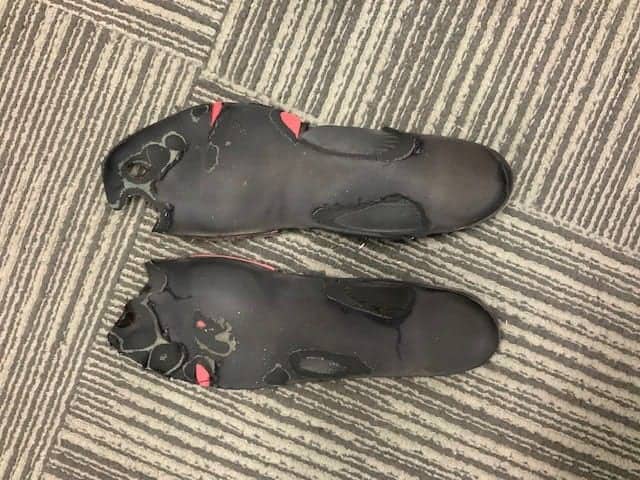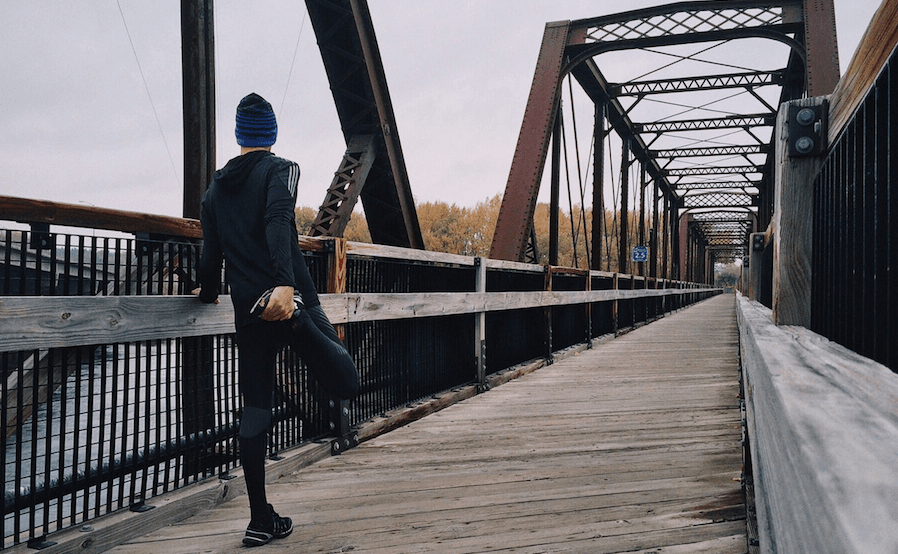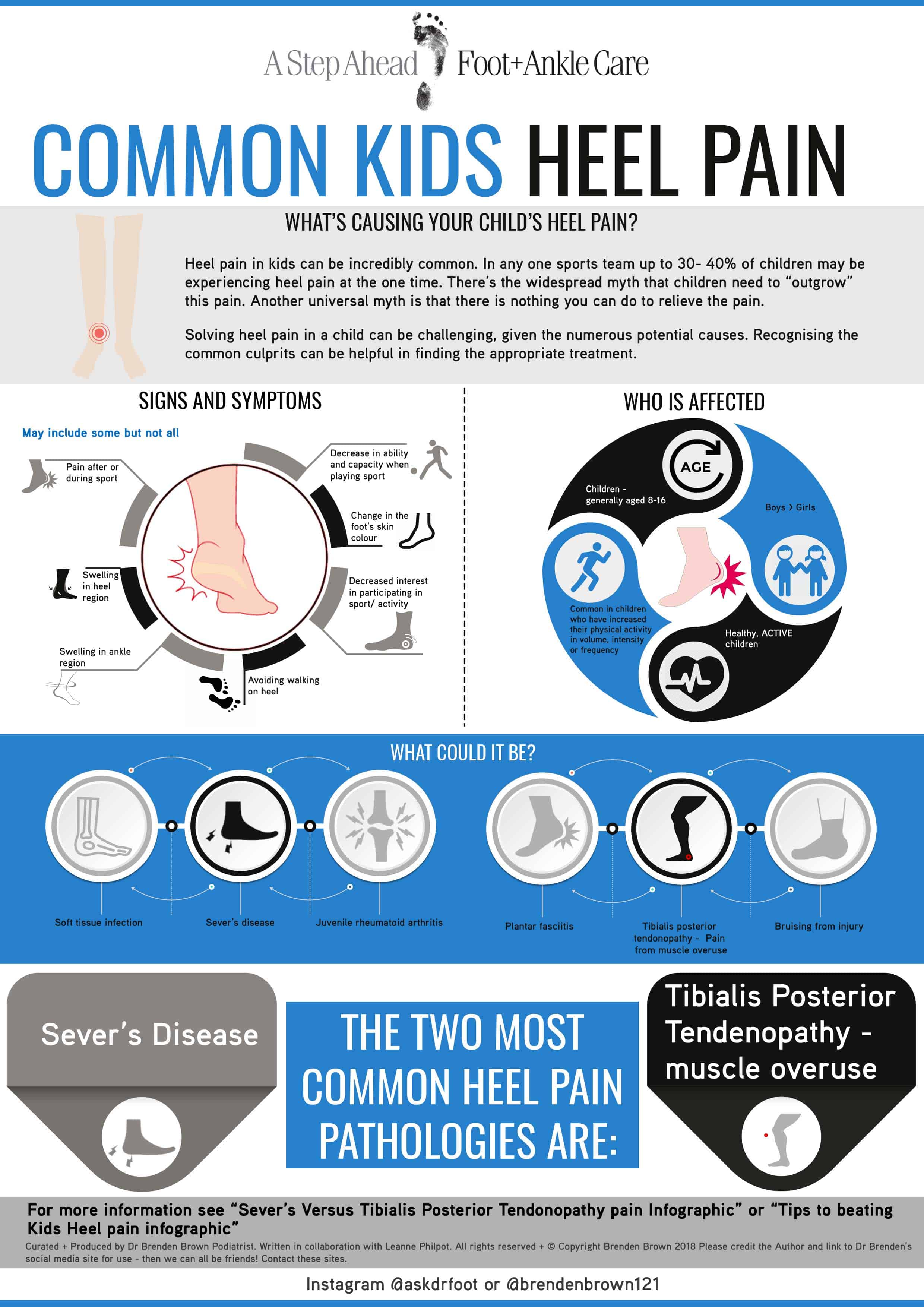
Blog, Heel Pain

Sports Care
Dr Brenden Brown, sports podiatrist from Sydney-based A Step Ahead Foot + Ankle Care, says, “Cold muscle is less pliable which means it has to work harder to accommodate a given load and will be more resistant to sudden stretch. Less pliable muscle tissue is also more susceptible to overuse injuries so never underestimate the importance of warming up (correctly!).”
He provides 4 steps to a successful warm up

4 hacks for a successful warm up
#1 Set aside adequate time
Warming up prepares the body for sport by improving blood flow to the different areas, increasing the muscle temperature and making muscles more pliable. The result – less likelihood of injury!
“The warm-up routine needn’t take half an hour, but it should take a good 10-15 minutes,” says Dr Brenden.

#2 WALK, before you run!
All too often players arrive at their sports training session and the coach shouts, “Right, go for a run”. This is way too much sudden change for the muscles.
No matter what sport or activity, players can begin their warm-up by walking.
Dr Brenden advocates the ‘Two footy fields or eight netball courts’ approach to warming up…
- Start slowly walking around the outside of 2 footy fields, end-to-end or side-to-side. For court sports, this equates to approximately 8 laps of the court!
- As you walk further SLOWLY pick up the pace. “NEVER get to a run!”
- You will do 2 complete laps of the 2 fields or 8 laps of the courts.
- NOW you are ready to look at further warm up exercises and maybe that coach’s run!

#3 Perform activity-specific warm ups and training
Let’s take netball as an example, there’s little point in netballers shooting hoops and running straight up and down the court in their warm-up and training sessions. It’s far better to do side-to-side jumps, high jumps and lands, as well as cutting movements. This is much more specific to what they’ll likely to be doing on the court and will help ensure the appropriate muscles are warmed up.
Same goes for footy, rugby or any other sport for that matter; make sure the warm up exercises you perform are relevant to what you’ll be doing on the field or pitch.

#4 Should you really stretch before sport?
This is an important question, particularly as when you stretch out a muscle and hold it there (static stretching) you can push the tissue past where it needs to go, which could do more harm than good!
According to the experts, stretching is NOT PROVEN to help prevent injury, curb muscle soreness after exercise or improve your performance.
In his paper ‘Does stretching improve performance? A systematic and critical review of the literature’1 sports medicine physician Ian Shrier writes, “An acute bout of stretching does not improve force or jump height, and the results for running speed are contradictory. Regular stretching improves force, jump height, and speed, although there is no evidence that it improves running economy.”
Another article2 states: “Static stretching before exercise can weaken performance, such as sprint speed, in studies. The most likely reason is that holding the stretch tires out your muscles.”
It goes on to say, “you should warm up by doing dynamic stretches, which are like your workout but at a lower intensity.”
Dr Brenden explains, “Dynamic stretches differ from the norm in that they stretch the body fluidly through an entire range of motions. Instead of holding the muscle in a stationary stretched-out position, you move gradually through the movement. This also allows you to make the stretching movement more specific to the sport you’ll be playing.”
Related:
4 hacks for staying injury free this winter sports season
Warming up for sport—why bother?
Sources:
-
https://www.ncbi.nlm.nih.gov/pubmed/15377965
-
https://www.webmd.com/fitness-exercise/features/how-to-stretch#1

Heel Pain, Kids Feet, Uncategorized

INFOGRAPHIC: Common kids’ heel pain

Blog, Sports Care

Warming up for sports—why bother?
“Warm-ups have the ability to help prepare the muscles for activity. However, what’s changed is that we now question many ‘traditional’ warm-up methods; evidence suggests that static stretching probably shouldn’t be part of most people’s warm up routine,” says founder of A Step Ahead Foot + Ankle Care Dr Brenden Brown.
“The days of a few quick hamstring stretches followed by a run around the field are long gone. Modern warm-ups are more cleverly designed; they need to be more specific to the sport we’re playing or the activity we’re embarking on.”

The benefits of warm-ups
“Preparing the body for participation in sports by warming up, will enhance the maximal performance and reduce the risk of injury! This is a sentence I often find myself repeating over and over again to my young patients,” says Dr Brenden.
“The Netball World Cup was a great example of how warming up is directly linked to injury prevention and optimum performance. The public was able to see first hand the amount of time the best teams in the world spend on warming up before games.
“Warming up improves blood flow to the heart, increases the muscle temperature and makes muscles more pliable.
“Cold or less pliable or elastic muscle works harder to accommodate a given load and will be more resistant to sudden stretch. Less pliable muscle tissue is also more susceptible to overuse injuries.
“No matter what the sport or activity is, players can begin their warm-up by walking a couple of laps of the soccer field or court. Increase the pace on the second lap to turn it in to a brisk walk but don’t jog or run.
“As you walk you’re infusing the tissue and muscles with blood to gently warm up the body. At the end of a gentle warm-up your muscles are ready to be used.”
The ‘right’ kind of netball warm-up
“I continue to see kids doing two types of warm-ups. They either run from one end of the netball court to the other and that’s it or they go back to the classic—are dare I say outdated—routine involving calf stretches, hamstring stretches, touching toes and throwing the ball into the hoop.
“If we take netball as an example, the warm-ups need to be specific to the sport. Most netballers need to be doing lots of side-to-side movements, twists, turning and cutting movements.
“This might include doing the grapevine across the court, side-to-side stepping, moving up to side-to-side hoping and jumping. Standing still, pointing the toe and rotating the ankle is also useful as part of a warm-up.
“The warm-up routine needn’t take half an hour but it should take approximately 10-15 minutes.”

To stretch or not to stretch—this is the question!
Dr Brenden explains, “By stretching out a muscle and holding it there (static stretching) we’re pushing the tissue past where it needs to go, which could do more harm than good.
“This type of stretching is also not sports specific. However, stretching doesn’t always mean stretching out a muscle and holding it there.
“Dynamic stretches differ from the norm in that they stretch the body through movement. So instead of holding the muscle in a static stretched-out position, you move gradually through the movement.
“At best, I’d call this a light stretch. There should be no risk of over-stretching the muscles.”
8 reasons to warm up
- Increases range of movement
- Warms up muscles in prepares for activity
- Increases fluid production to lubricate joints
- Triggers the neural pathways between your brain and your muscles
- Improves reaction and response time
- Reduces risk of injury
- Potential to improve performance
- Helps improve recovery time
Related articles:
Winter sports’ greatest enemy….ankle sprain
Your guide to rock-solid ankle stability
A Step Ahead Foot + Ankle Care is one of Sydney’s leading foot and ankle clinics. Principal podiatrist and founder of A Step Ahead Dr Brenden Brown (AKA Dr Foot) has been taking care of people’s feet for more than 20 years.
With a background in sports medicine and having served as a former president of the Australasian Podiatry Council, Brenden is a wealth of information when it comes to foot and ankle care.

Blog, Sports Care

Winter sports’ greatest enemy…ankle sprain
Winter sports season means netball, footy and rugby union games galore (maybe even a spot of skiing!), but it also presents the increased risk of ankle sprains and strains…
“The chilly season means that muscles become cold. Without adequate warm-up exercises the muscles and connective tissue aren’t as flexible as they should be and this can lead to injury,” says Dr Brenden Brown, sports podiatrist and founder of A Step Ahead Foot + Ankle Care.
Dr Brenden is calling on health practitioners to “up their ankle game” beyond the simple “text book approach”.
“Ankle sprains are a common winter sports injury. They occur as a result of involuntary sliding or twisting of the feet when you step on slippery or unstable ground. The sprain happens when the foot is forced into an unnatural position
“The intensity at which the ligaments stretch can sometimes be so severe that it causes fracture or serious inflammation and pains. Doing whatever you can to prevent an ankle sprain is a no-brainer.”

Avoiding winter sports ankle injuries
Planning ahead is a great way to prevent winter sports injuries—particularly when it comes to ankle injuries. With the right preparation and precautions you can reduce the risk of an ankle sprain or strain.
“The common preventative treatment for ankle sprains is balance exercises, but while this might go some way to help reduce ankle sprains the approach really needs to be multi-factorial,” says Dr Brenden.
“To lessen the risk of injury you need to use taping, bracing and practice strength exercises.”
But be warned, Dr Brenden explains that many healthcare professionals—including, physios, chiros, sports coaches and others—at times only suggest doing calf raises. He says, “This is fine if the sport you’re doing only requires you to move the ankle up and down, but if your sport means moving your ankles side to side (for example, skiing, netball, rugby league, football and almost all sports!) then calf raises are of no use.
“A textbook response to ankle sprains will often end patients in trouble. If your health professional is merely suggesting calf raises, it’s time to look further afield.
“More and more evidence suggests we need to look much further up the body, toward the gluteal muscles and alike.
“As such, your strength training needs to incorporate more than just your ankle and should be more sport specific.”
Dr Brenden says you need to functionally challenge the ankle in order to strengthen it appropriately and a special emphasis should be on preparation.
“Those participating in winter sports (or any sports for that matter!) can benefit from completing a tailored muscle strength-conditioning program. This is particularly the case if you’ve suffered a previous ankle sprain or are at high risk of injury.”

Points to note:
- Ankle strengthening activities should include hoping, jumping and cutting movements if that is part of your sport
- Strength exercises should include loading the muscles to be able to dynamically work as they would in your chosen sport
- Loading the muscle prepares your muscles for the activity ahead. This may include using more than just weight-bearing exercises and incorporating resistance-based training.
Additional measures to help prevent ankle sprains include:
- Warming up. Cold muscles are less flexible and more prone to injury
- Wearing footwear appropriate to your sport
- Making sure your footwear fits you properly (loose boots can cause falls, increasing risk of ankle injury)
- Taking the time to cool down. Slow stretching can reduce post-sports muscle tightness and soreness and may help reduce future risk of injury
- Knowing your limits and sticking to them
Treating your ankle sprain
The immediate treatment for an ankle sprain is the RICE approach. This incorporates: Rest, Ice, Compression and Elevation.
- REST: “if it hurts don’t do it”. Giving your ankle a period of rest after the sprain can assist with healing
- ICE: apply ice packs to the ankles, or area of discomfort
- COMPRESSION: apply bandages over the injured area. Compression socks are available from your local podiatrist’s clinic
- ELEVATION: lift the foot up above the waist or heart.
“Evidence shows that ankle sprains are unlikely to get better by themselves. Plus once you have an ankle sprain, you’re significantly more likely to have another sprain.”
“So just like the pre-sport preparation phase, it’s time to get back to strength and exercise-based rehabilitation as your next phase in rehab,” says Dr Brenden.
Related articles:
Your guide to rock-solid ankle stability
Your guide to choosing the best netball shoe
Your guide to choosing a footy boot
Think you have a heel spur, think again
A Step Ahead Foot + Ankle Care is one of Sydney’s leading foot and ankle clinics. Principal podiatrist and founder of A Step Ahead Dr Brenden Brown (AKA Dr Foot) has been taking care of people’s feet for more than 20 years.
With a background in sports medicine and having served as a former president of the Australasian Podiatry Council, Brenden is a wealth of information when it comes to foot and ankle care.


 Founder of A Step Ahead Foot + Ankle Care in Sydney, and former president of the Australasian Podiatry Council, Dr Brenden Brown (A.K.A Dr Foot) is a wealth of knowledge on how to take care of your feet, including how to find the best shoes.
Founder of A Step Ahead Foot + Ankle Care in Sydney, and former president of the Australasian Podiatry Council, Dr Brenden Brown (A.K.A Dr Foot) is a wealth of knowledge on how to take care of your feet, including how to find the best shoes.


















 Dr Brenden’s White paper report on the “6 Reasons You Won’t Beat Heal Pain” outlines what’s stopping you from beating this and tips on how to stop it in its tracks!
Dr Brenden’s White paper report on the “6 Reasons You Won’t Beat Heal Pain” outlines what’s stopping you from beating this and tips on how to stop it in its tracks!